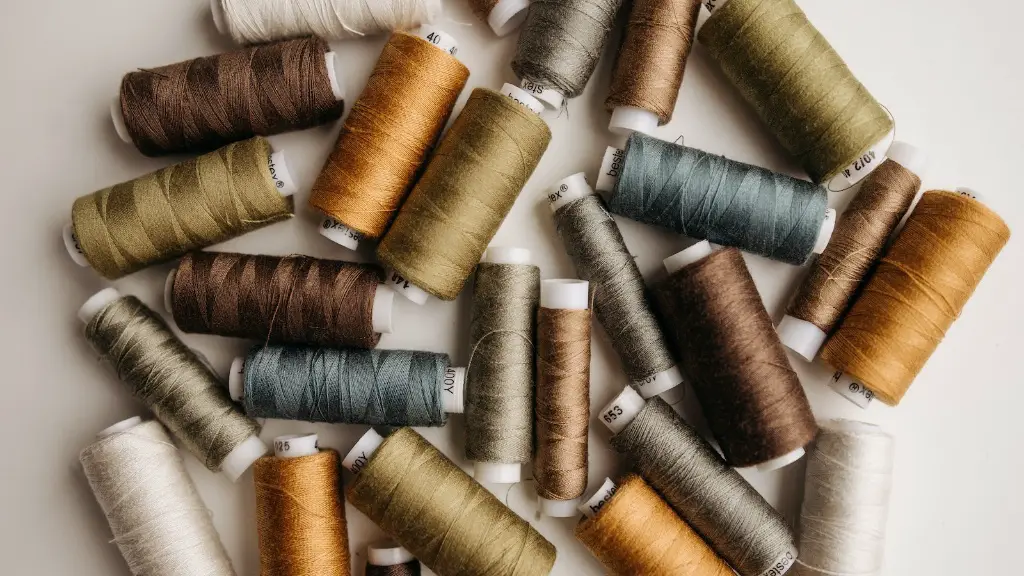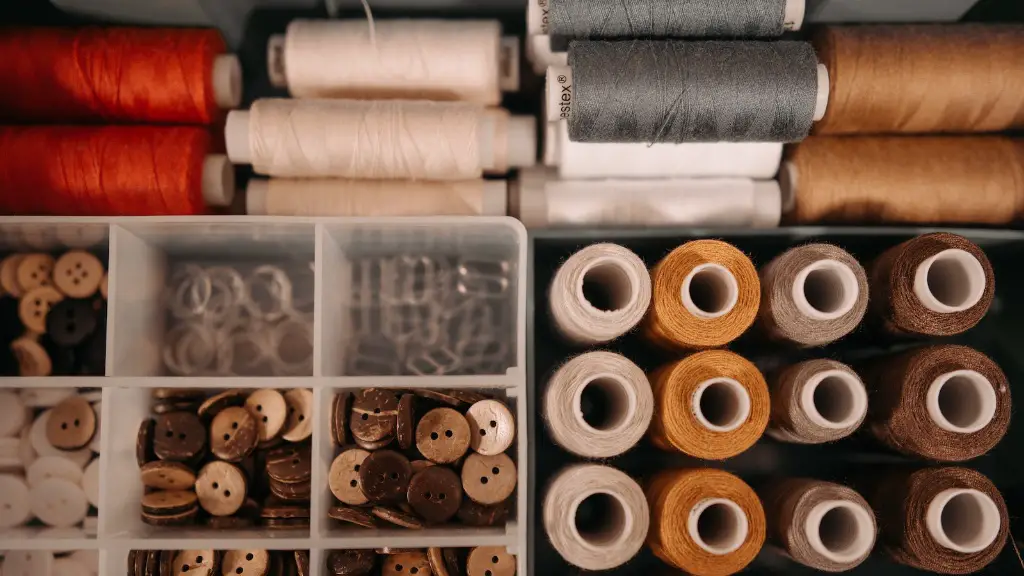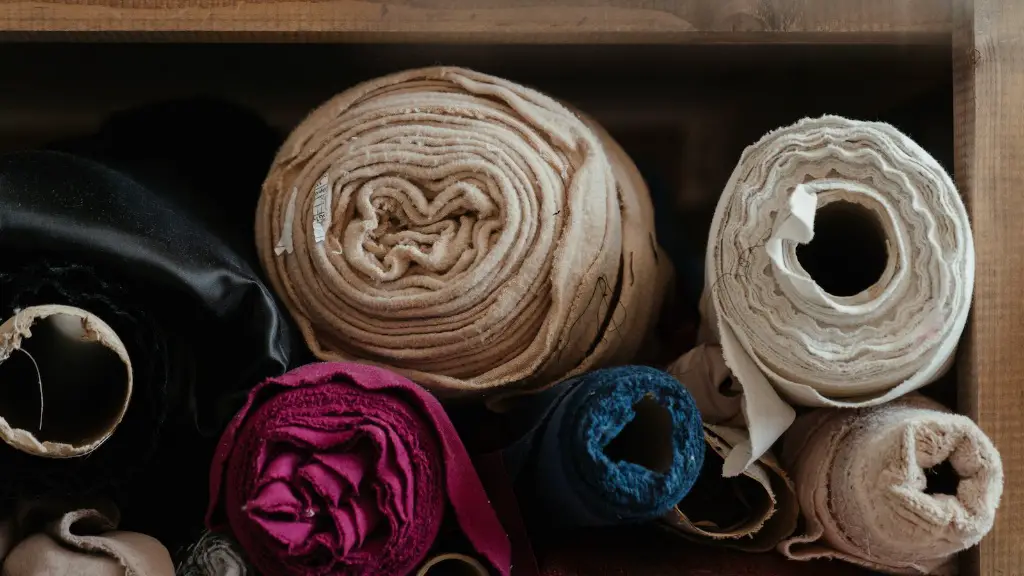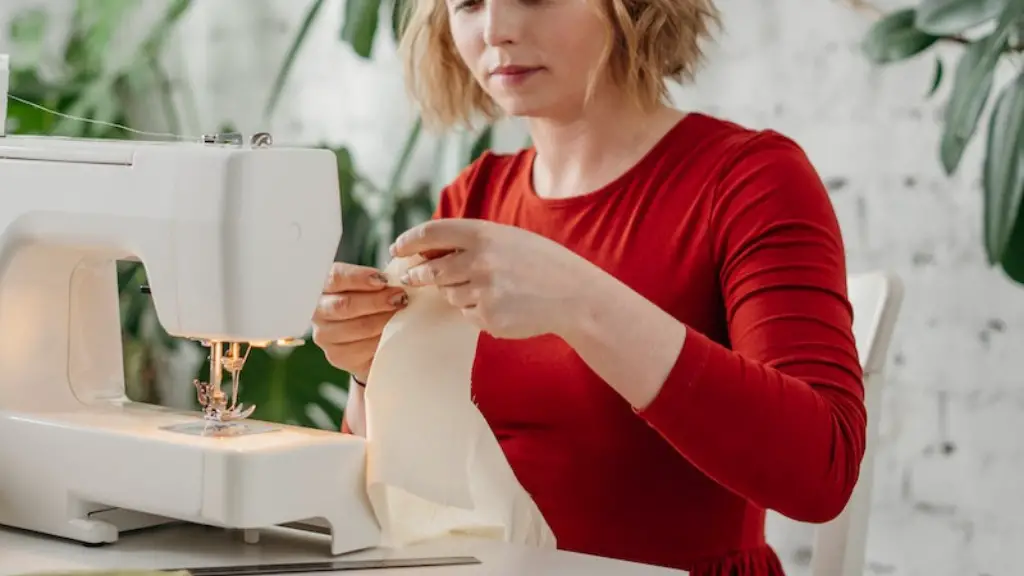The Basics
Threading a sewing machine can be a tricky task. It requires attention to detail and some patience. Fortunately, anyone with a little skill and knowledge can do it without too much trouble. To get started, it is important to know where the sewing machine bobbin case is. The bobbin case usually slides out of the side of the machine. It is important to keep the bobbin case dust-free since dust can clog the tension discs and cause stitching problems.
Next, the thread spool should be placed on the pin, corresponding with the direction of the arrow on the spool. The thread should then be threaded through the hole of the take-up lever and down the thread guide, which is the metal or plastic arm on the side of the machine. This guide is designed to ensure that the thread is aligned correctly.
From the thread guide, the thread should be fed through the metal arm and the main tension dial. This tension dial is responsible for controlling how much thread is carried through the needle. The thread should also be guided through the bottom of the bobbin case as it heads to the needle.
Foreign Objects
Sometimes, sewing machines can get clogged with foreign objects, such as lint and dust, which can cause threading problems. It is important to keep the machine clean and free of lint and dust. The bobbin case should also be inspected regularly, since it can become clogged with debris. If the bobbin case is clogged, it should be cleaned with a small brush to remove any debris and to ensure that the tension disc remains free of obstruction.
Threading the Needle
Once the bobbin case and the tension disc have been cleared of debris, the next step is to thread the needle. It is important to select the correct size of thread for the needle. This should be determined by the size of the hole in the needle. The thread should then be guided through the hole in the needle and pulled through for a length of 3-4 inches.
Tension Adjustment
It is then necessary to adjust the tension of the thread. This is done using the tension disc.
Firstly, the bobbin should be placed in the bobbin case securely to prevent it from slipping out while in use. Then, the tension dial should be adjusted so that the thread is tight but not too tight. The idea is to let the thread move smoothly through the needle without becoming tangled or snagged. The tension should be tested by pulling the thread finger-tip tight and checking if it holds the tension when let go.
Winding the Bobbin
After the tension has been adjusted, the bobbin needs to be wound with the thread. This is done by attaching the thread spool to the spool pin, then guiding the thread through the tension discs, around the bobbin winder, and finally onto the bobbin itself. Then the bobbin winder should be turned to start winding the thread. Once the bobbin is full, the bobbin winder should be turned off, and the spool should be removed from the bobbin.
Filling the Bobbin Case
The last step is to fill the bobbin case with the bobbin. This is done by inserting the bobbin into the case and adjusting the tension discs so that the thread is tight enough on the bobbin. The bobbin must be inserted in the clockwise direction, corresponding to the arrow on the side of the bobbin case.
Troubleshooting
If the thread is not feeding correctly and the tension is not quite right, the thread might need to be rethreaded. It is important to double check the thread guide and make sure that there are no obstructions. The tension dial should also be adjusted to make sure that the thread is not too tight. This is an important step to ensure that the thread does not break during sewing.
Needle Threader
Many modern machines now come with a needle threader. This is a small device that is used to guide the thread through the eye of the needle. The needle threader is a useful tool, as it makes threading the needle much easier and faster. Although, with a little practice, it is possible to thread the needle without a needle threader.
Getting the Right Thread
When rethreading a sewing machine, it is important to choose the right thread for the job. The choice of thread will depend on the fabric and the desired stitch. For heavier fabrics, a thicker thread should be used, while for lighter fabrics a thinner thread is usually recommended. Synthetic threads tend to be stronger and easier to work with than natural threads, such as cotton or wool.
Checking the Machine
Before starting a sewing project, it is important to check the machine to make sure that it is clean and in good working order. This includes checking that the tension dial is set correctly, making sure the bobbin is not clogged with lint, and inspecting the needle and thread for damage. It is also important to make sure all the necessary tools are on hand before starting a project.
Cleaning and Maintenance
Regular maintenance and cleaning of the sewing machine is essential to ensure it remains in good working order. The machine should be cleaned regularly with a damp cloth and inspected for dust and debris. Also, it is important to replace the needle frequently, as this can affect the stitching quality. Additionally, the tension dial should be inspected regularly to ensure that it is set correctly for the type of fabric being used.
Operating the Machine
The sewing machine needs to be operated correctly to ensure the best results. It is important to select the correct stitch as well as the correct tension. Different fabrics require different tension settings. It is also important to select the correct needle size for the fabric, as this can affect the quality of the stitching. It is also recommended to use a seam guide to ensure that the seams are even and straight.
Start Sewing
Once the machine is properly set up and checked, it is time to start sewing. To begin, the foot pedal should be used to start the stitching process. As the sewing progresses, the speed and pressure of the foot pedal can be adjusted to achieve the desired stitch speed. Additionally, it is important to move the fabric slowly as the stitching progresses to make sure that the stitching is even and straight.
Taking Care of the Machine
In order to get the best performance and longest life from the sewing machine, it is important to take proper care of it. This includes avoiding overloading the machine with too many layers of fabric, as this can cause damage to the needle and other parts of the machine. Additionally, it is important to lubricate the machine regularly to keep it running clean and smoothly. Lastly, it is important to store the machine in a clean and dry environment to ensure that it remains in good condition.



